ATSC 113 Weather for Sailing, Flying & Snow Sports
Optical Phenomena
Learning Goal 10f: Recognize and explain optical phenomena over the sea, including mirages, fata morgana, and the green flash.
Sailors have claimed to see all sorts of strange things on the horizon: a flash of green light, floating castles, boats on top of boats, etc. Many of these ‘bizarre sightings’ were actually the result of optical phenomena, an interaction between light and the atmosphere. These are not illusions; they are real images that can be photographed. Here are a few optical phenomena to enjoy:
Mirages
Mirages are created when light passes
through air of different temperatures. Two types of mirages are
inferior and superior.
Inferior Mirage
An inferior mirageoccurs when you have
a dense layer of cold air sitting on above of your
line of sight, with a layer of less dense warmer air below your line of
sight. This happens frequently on hot summer days when the sun
shines on a black asphalt highway, and the hot ground heats the bottom
centimeters of air. When rays of light coming down from the sky
get close to the hot air near the ground, the light rays are bent
(refracted) back up toward your eyes.
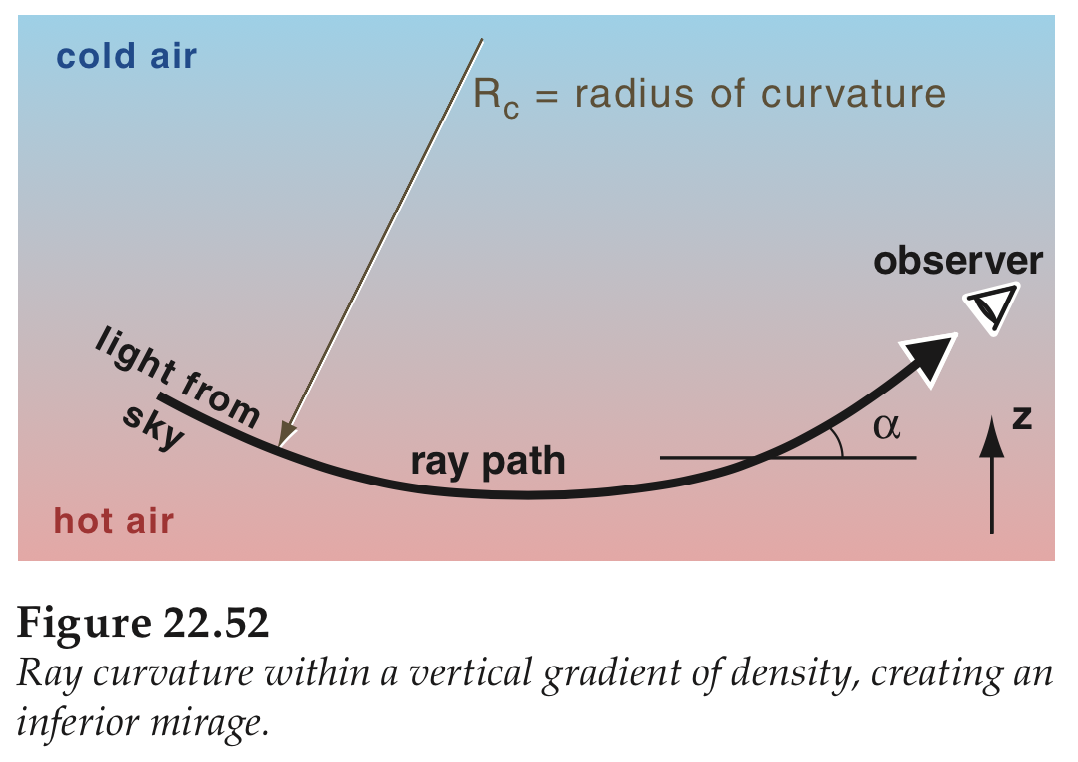
Source: R. Stull, 2017: Practical Meteorology.
This is your typical ‘oasis in the
desert’ mirage, where you look down toward the highway or desert sands
and see what appears as a pool of blue water. In reality, it is
light the blue sky bending back up toward your eyes. Since warm
air rises
and cool air sinks, the air layers are likely to mix and inferior
mirages will not last long unless there is continued heating by the
sun.
Inferior mirages happen less frequently over the ocean because the
ocean surface usually doesn't get extremely hot. However, it can
occur over the ocean when very cold arctic blows over unfrozen water.
Note in the image below, an inferior mirage makes it look like there is water on the pavement, when in fact there is not.
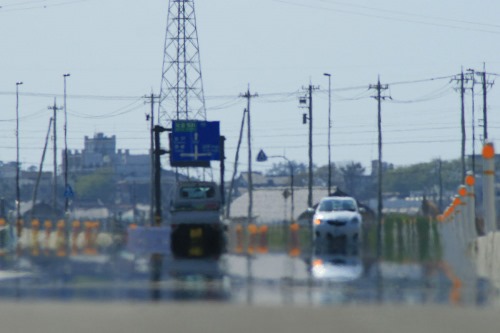
Source: U-ichiro Murakami (Murambo) - Own work, Public Domain, https://commons.wikimedia.org/w/index.php?curid=11630764
Superior Mirage
A superior mirage is the opposite: a
layer of warm air sits above your line of sight with a cool layer
beneath it. This is also known as a temperature inversion. Light bends down towards the denser air, but because
our eyes assume the light we see travels straight, the object we are
seeing appears higher than it actually is. Therefore we see the image,
or inversions of it, above where it actually is.
If another ship sails away from you, eventually they will disappear below the horizon. However, if conditions create superior mirages, then you can still the other ship further away from you even though the ship is a short distance below the horizon. Similarly, with the refraction of a superior mirage you can see mountain tops sooner as you sail toward a mountainous island or coastline, even though the mountain top might still be slightly below the geometric horizon. The term is looming, when the mirage makes the mountain top appear higher than it is. Also, boats on the distant horizon sometimes appear to be floating in the air above the water. A superior mirage can also act like a lens make objects appear smaller or larger, and closer or further away, than they actually are.
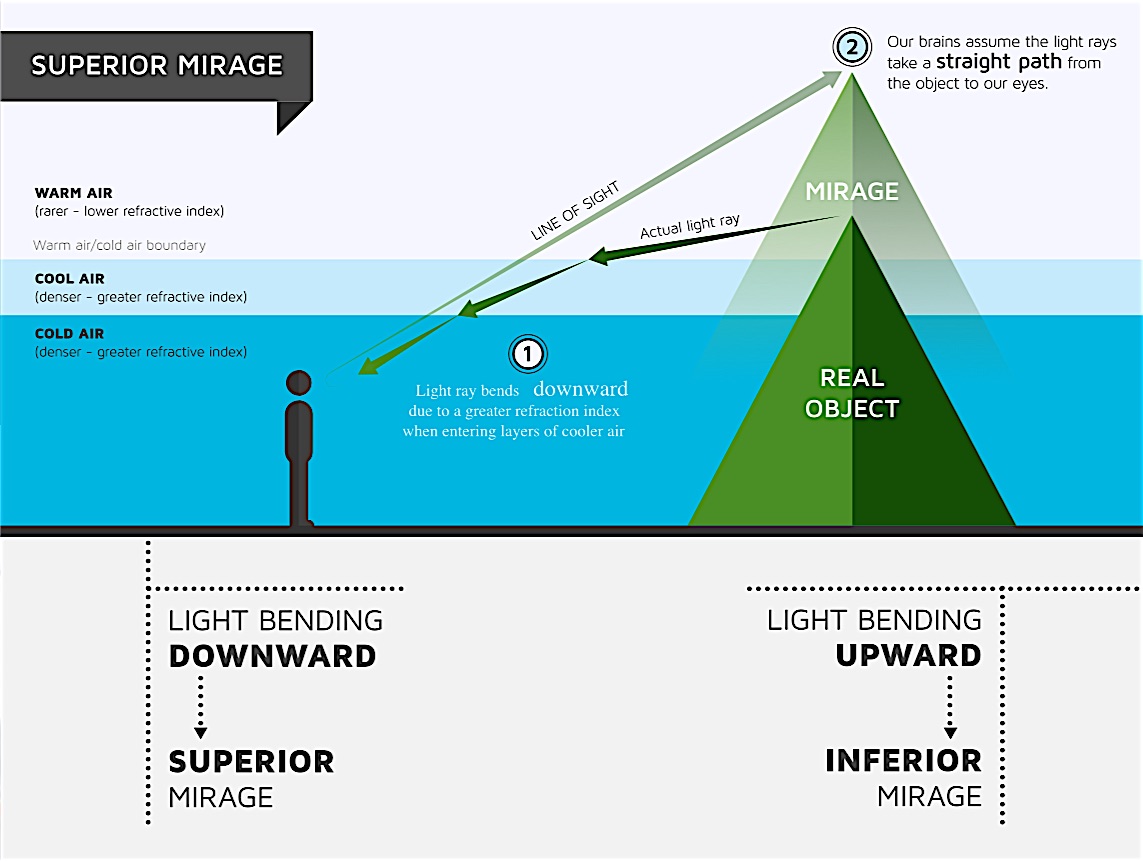
For a superior mirage, the mountain appears higher
than it actually is. This means that you can see the mountain top
from further away, if the air is clear. Source: This image was
created during "DensityDesign
Integrated Course Final Synthesis Studio" at Polytechnic University of
Milan, organized by DensityDesign Research Lab in 2015.
Image is released under CC-BY-SA licence. Attribution goes to "Ludovica
Lorenzelli, DensityDesign Research Lab". - Own work, CC BY-SA 4.0, https://commons.wikimedia.org/w/index.php?curid=37081455
An excellent example of a superior mirage occurred on 9 January 2022 over the Strait of Georgia. In the top figure below is what appears to be an iceberg floating in the waters of the Georgia Strait (Salish Sea) between Parksville on Vancouver Island and the city of Vancouver, Canada. But in reality, it is looming of the Cheam Mountains east of Vancouver (and east of Chilliwack). Namely, these mountains were about 180 km east of the observer. The bottom figure below shows that both these Cheam Mountains and the volcanic Mt. Baker were looming because the strong temperature inversion caused a superior mirage.
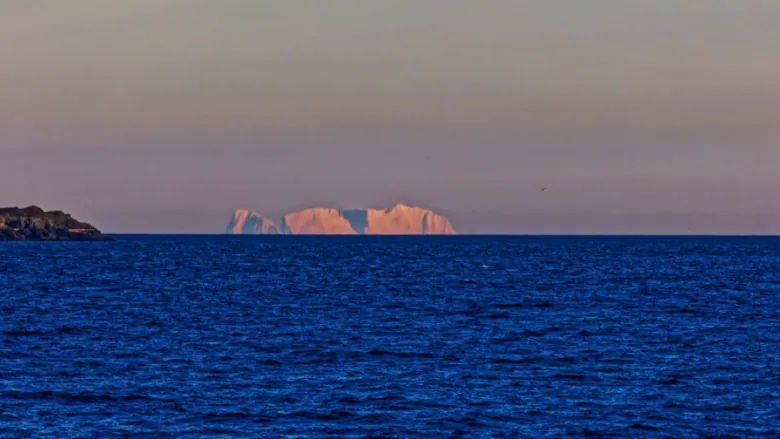
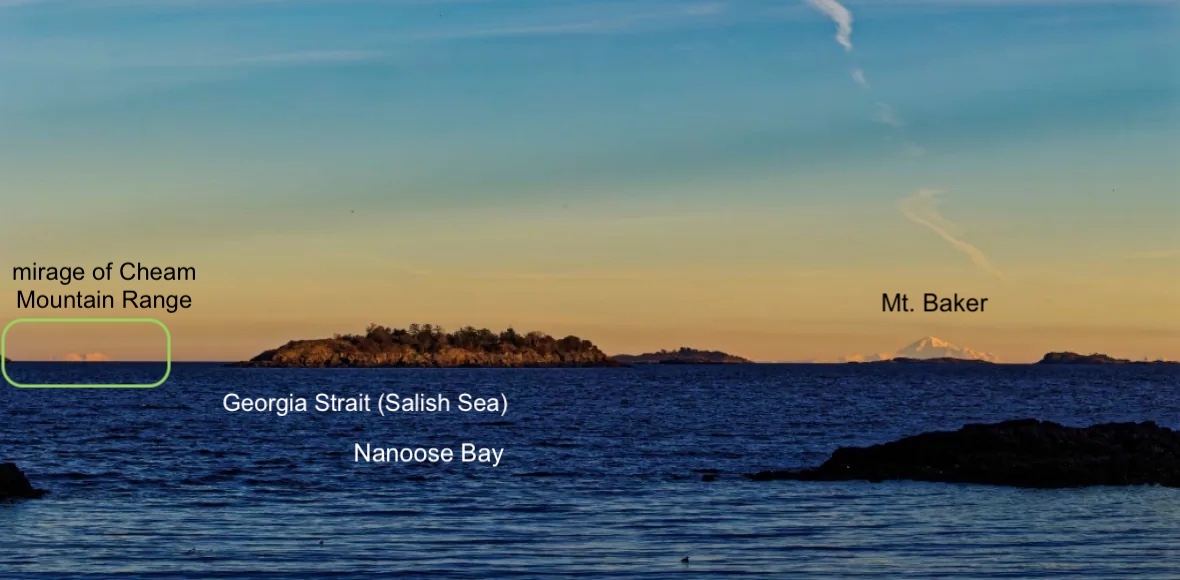
As was the case for the two photos above, often a long telephoto lens allows you to take the best mirage photos.
Summary of Mirages:
- Inferior mirage. Rays of light are bent upward. Looking down below the horizon, you see objects (or the sky) that are actually above the horizon.
- Superior mirage. Rays of light are bent downward. Looking up above the horizon, you see distant objects that might be lower or even below the horizon.
Fata Morgana
When the temperature inversion is not even, you may see a Fata Morgana. This could be caused by several layers of warm and cold air that cause a combination of superior and inferior mirages. Because of the uneven inversion, light is refracted in strange ways, creating multiple segmented reflections of the original image, with some sections towering high above the water. The image created by a Fata Morgana is usually much less recognizable than that in a mirage, and often appears as floating walls or castles.

Source: R. Stull, 2017: Practical Meteorology.
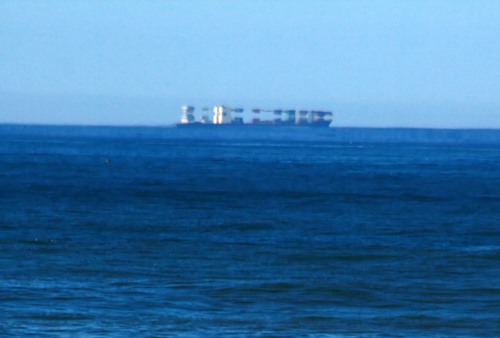
Source: Brocken Inaglory, CC BY-SA 3.0, https://commons.wikimedia.org/w/index.php?curid=17778586
Caption: Fata Morgana

Source: Gerd A.T. Mueller - Own work, CC BY-SA 3.0, https://commons.wikimedia.org/w/index.php?curid=312887
Caption: A Fata Morgana of a boat
Green Flash
A green flash is a rare optical phenomenon that only lasts a few seconds immediately after sunset or before sunrise. As the sun sets below the horizon, the sun’s rays travel through more of the Earth’s atmosphere than when the sun is directly overhead at mid-day. The atmosphere acts like a prism, splitting white light from the sun into its various colours by wavelength. The shorter wavelengths (green, blue, violet light) are the last to set below the horizon. Blue and violet light typically get scattered by particles in the atmosphere, leaving green as the last light you see before all light from the setting sun disappears below the horizon.

Source: R. Stull, 2017: Practical Meteorology.
Mirages can amplify a green flash by exaggerating the separation of light into its different colours, and making the band of green light look wider.
Green flashes only occur under the perfect atmospheric conditions, making them a relatively rare sighting. Residents of islands in the Caribbean Sea report seeing green flash many times each year. The image below shows a progression of a green flash during a sunset.

Source: Brocken Inaglory - Own work, CC BY-SA 3.0, https://commons.wikimedia.org/w/index.php?curid=6527401
Additional Resources: (non-required material)
An Introduction to Mirages: http://www-rohan.sdsu.edu/~aty/mirages/mirintro.html
How can I see a green flash? – EarthSky.org: http://earthsky.org/earth/can-i-see-a-green-flash
The math behind atmospheric optical phenomena (mirages, rainbows, halos, etc.) Stull 2017: "Practical Meteorology: An Algebra-based Survey of Atmospheric Science". Chapter 22 Atmospheric Optics.
Keywords: mirage, inferior mirage, superior mirage, looming, inversion, Fata Morgana, green flash
Image credits: are given near the images.